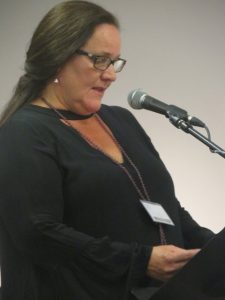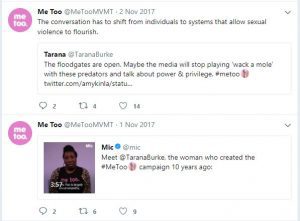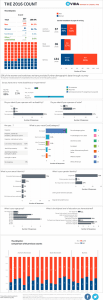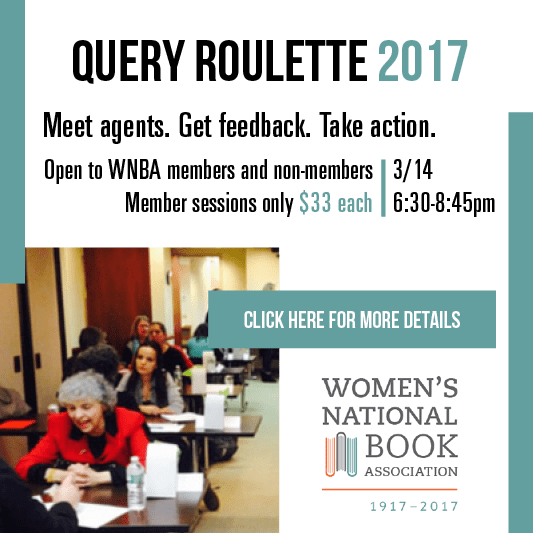
National President Jane Kinney-Denning at the WNBA Centennial
Photo Credit Celine Keating
Last week, Women’s National Book Association president Jane Kinney-Denning wrote an article on Publishers Weekly that called for the #MeToo movement to come to book publishing.
Her article (which you can read on Publishers Weekly) calls for members of the publishing community to lend their voices. “Don’t let your weariness keep you down: participate, speak up, speak out, support, and volunteer,” she says. In this call to action, she shares her hope that the industry can progress and set an example.
THE #MeToo MOVEMENT/S
The WNBA was founded on the ideals that books hold tremendous power and that book creators grow stronger when united. The #MeToo movement came from a similar idea: that by joining our voices, we will be heard.

Tweets from the Me Too Movement
Courtesy of Me Too on Twitter
While the “Me Too” movement was created by Tarana Burke ten years ago to give assistance to sexual assault survivors in underprivileged communities, it became a viral hashtag last year when actress Alyssa Milano tweeted a suggestion that anyone who has been sexually harassed or assaulted reply “me too” so we could see the magnitude of the problem.
The movement has been incorporated into larger conversations. It’s been particularly visible in media, with Weinstein, Rose, and Lauer as some of the most visible perpetrators.
But what are books if not media?
THE VOID
Many of those outside of publishing see only the finished product—the book—with the author’s name, imagining that the author wrote and published the book in a void.

J.K. Rowling
Courtesy of jkrowling.com
Those of us closer to the publishing industry know how wrong that assumption is. Harry Potter—arguably today’s most well-known series—has “J.K. Rowling” as the author. Rowling revealed that she went by gender-neutral “J.K.” because her publisher told her that “Joanne” would alienate male readers—then admitted that she would have probably published as “Rupert” if her publishers had told her to.
THE INDUSTRY
Yes, that was twenty years ago.
But the 2016 VIDA Count shows that, while some progress has been made in the voices of reviewers and the books being reviewed, we’re still not there. And that says nothing about the hidden workings of the publishing industry itself. In October, Publisher’s Weekly released an article exposing some publishing professionals’ #MeToo stories and discussing the disparity in roles people hold in publishing—though approximately 80% of the publishing workforce is formed by women, 51% of managers are men.
THE CANON
Within literary fields, the predominantly white male canon has long been a topic of discussion, because adhering to the canon necessarily means suppressing other voices. While this article suggests ways to work around some of the canon’s limitations, a 2016 petition by Yale Students requested a more diverse curriculum and sparked conversations and responses that varied from (not direct quotes) “yes, the canon is horrible—read it anyway” to “yes, we need to rethink the canon to be more inclusive.”
THE CONVERSATION
These three conversations (only a few of the many) are seemingly separate: what publishers believe readers want, sexual harassment and discrimination in the publishing workplace, and the lacking inclusivity of voices in the canon. Ultimately, though, these come together into a broader conversation about abuse of power and suppression of voices. Let’s lend our voices as we heed Jane’s call by speaking up and out.
P.S.: the newly-created Staunch Book Prize will only consider thrillers that don’t resort to violence against women.





